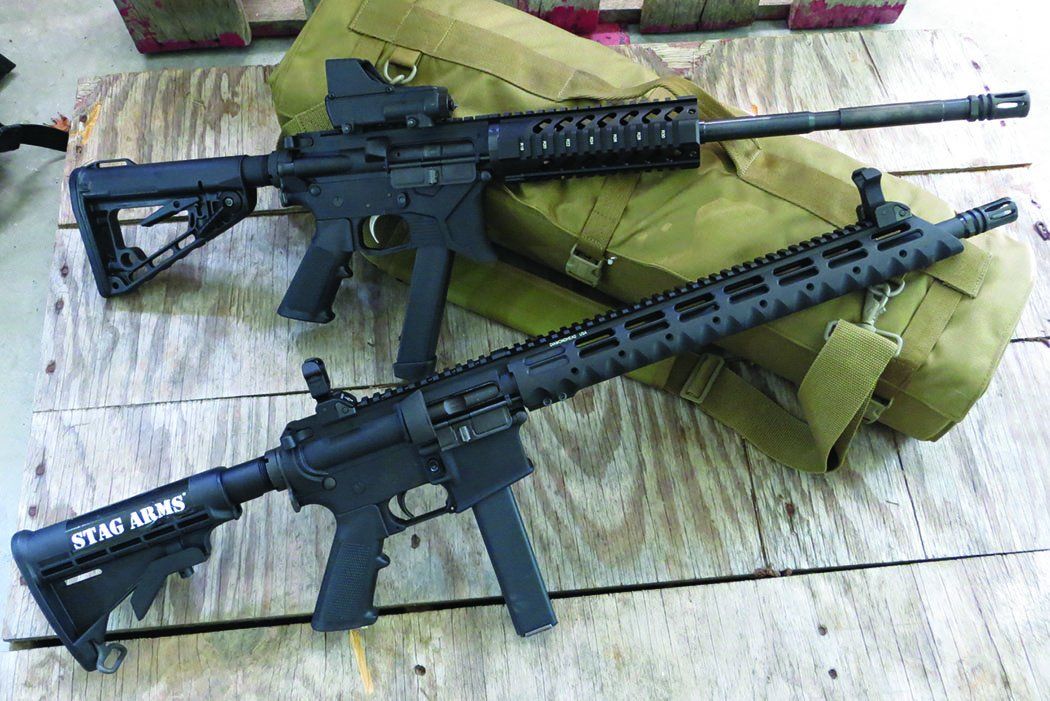
Carbines chambered in 9mm with AR-15 controls have been around since the 1980s, when Colt developed the Colt SMG, a select-fire carbine. Since military and LE agencies were familiar with the AR platform, it made sense to create a rifle that offered less penetration, less perceived recoil, less muzzle blast, and better short-range control.
Today’s advances in ammunition technology has nearly made the overpenetration problem moot. Load an AR chambered in 5.56x45mm NATO with the right bullets and you can control overpenetration, and, of course, the same can also be said with newer 9mm ammo. However, if you’re trying to decide on whether to add a 5.56 carbine or a 9mm carbine to your home-defense plans, the muzzle blast from the 5.56x45mm NATO causes some shooters to flinch. The 9mm produces nowhere near the muzzle blast. You pay a penalty for that ballistically, because there is a chasm between the 9mm pistol round and the 5.56 rifle round, which is why the Colt SMG was and is primarily used as an entry weapon to provide a high volume of firepower that can be effectively controlled. If you can’t decide, there are plenty of kits that allow a user to adapt a 5.56 AR lower and put on a 9mm upper receiver and a drop-in magazine block to make the 5.56 magwell compatible with 9mm magazines.
What a 9mm AR really offers is a long gun and handgun that share the same ammo. That concept has been around since the days of the Old West because it made sense then and it makes sense today. Another factor to consider is ammunition cost; 9mm ammo, in some cases, is nearly half the cost of 5.56 ammo, and a fairly good assortment of 9mm can usually and easily be found in big-box stores as well as your local mom-and-pop gun store. These rifles also offer nearly the same amount of customization as a standard AR-15 carbine — pistol grips, handguards, BUIS, optics, charging handles, safety selectors, triggers, muzzle devices — allowing nearly an unlimited amount of personalization.
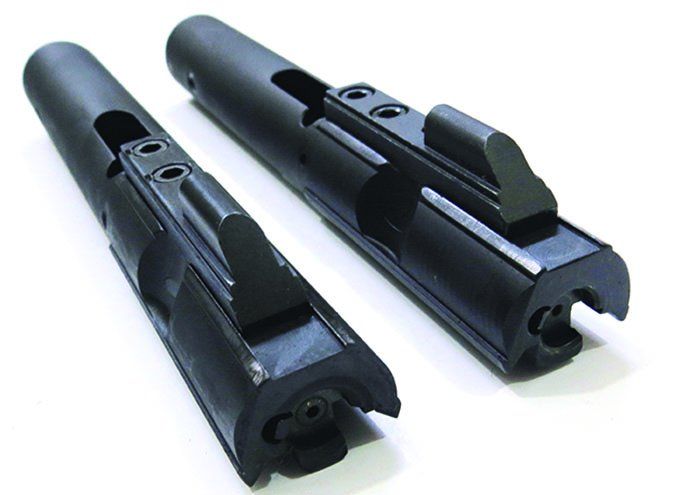
We recently tested two 9mm ARs that look like and have the same controls as an AR-15, but their operating systems were quite different. The Stag Arms 9T and the Tresna Defense JAG9G BU use simple blowback mechanisms, not a gas-impingement system or a gas piston system like on an AR-15/M16 rifle or carbine. In a blowback action, there is no gas block, gas tube, or a piston, and the bolt-carrier group is noticeably different. The AR’s bolt-carrier key is not needed, and the bolt carrier is heavier on a 9mm AR compared to a traditional AR-15 bolt carrier. Because the blowback system works off the resistance of the bolt and recoil/buffer spring, a heavier bolt carrier is required. You can feel the effect when the rifle cycles. The bolt and recoil spring move rearward from the force of a shot fired to eject the empty case and cock the hammer. They then move forward via the recoil spring in the buffer tube, with the bolt pushing a cartridge out of the magazine and ramming it into the chamber.
Since 2003, Stag Arms, located in Connecticut, has been manufacturing Mil-Spec AR-15 rifles in a variety of furniture and caliber options; in addition to 9mm, the company offers 5.56mm, 300 BLK, 6.8 SPC, and 22 LR. Stag also makes left-hand variants with the ejection port located on the left side of the rifle. Stag Arms manufactures 80 percent of its parts in house, with only the plastic pieces and some of the small springs manufactured by other vendors. Tresna Defense introduced its civilian rifles in 2014. Located in Georgia, Tresna (which means tool in Basque) makes models compatible with 9mm or 40 S&W magazines from either Glock or S&W M&P pistols. So, depending on your handgun brand and caliber preference, you can have a Tresna rifle that uses the same magazine.
Both of these ARs are dedicated 9mm platforms, meaning they are built specifically to fire 9mm ammo with a dedicated 9mm upper and lower. There are other similarities. Both featured a 16-inch barrel with an A2-style flash hider, A2-style pistol grip, single-stage trigger, and each came in a hard case with one magazine. From there, the rifles’ features diverge. The biggest difference between these two rifles is the Stag Arms uses a Colt-style stick magazine, while the Tresna Defense uses Glock Gen4 9mm magazines. We found that the ability to use the same magazines in our handguns and rifles offered a lot of flexibility. Another difference is the Stag Arms 9T is ready to be used out of the box, due to the flip-up sights being included. The Tresna Defense JAG9G BU does not come with sights, so that can become another way for consumers to separate these two highly-ranked products.
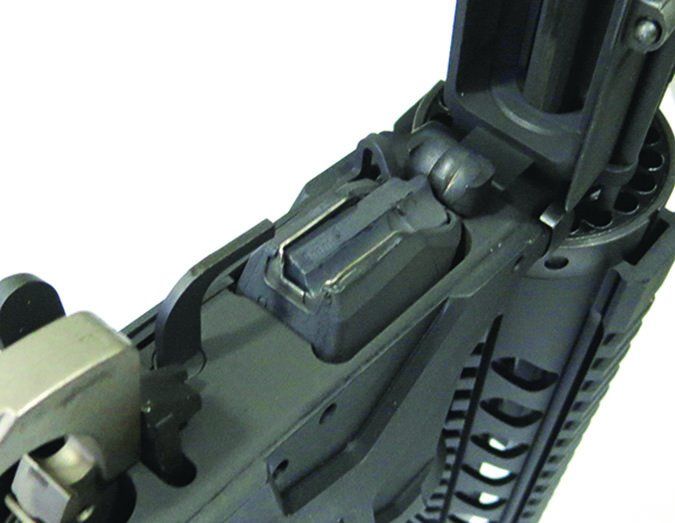
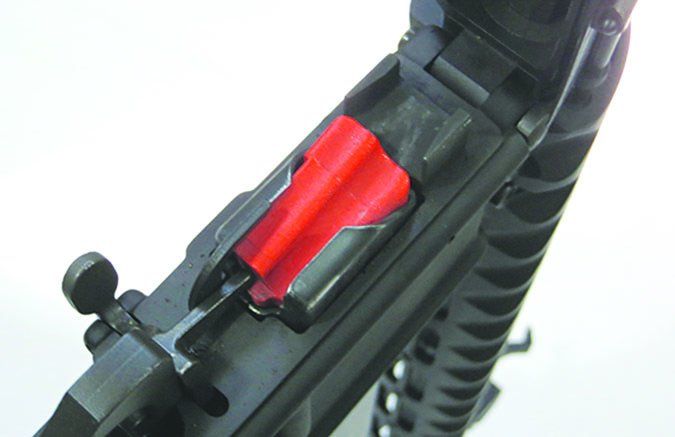
To collect range data and firing preferences, we mounted a Mepro Tru-Dot RDS (Red Dot Sight) with a 1.8-MOA dot reticle (MidwayUSA.com, $399, #392164). The RDS offers rapid target acquisition with both eyes open. It is constructed with an aluminum body and tough polymer frame around the large viewing window. Power is supplied by a single AA battery, which provides thousands of hours of run time. An auto shutoff feature offers additional energy conservation. The red-dot reticle has four switchable brightness settings; three for day/night use and one for use with GEN II and GEN III NVGs, as well as with magnifiers. The unit also features an integral Picatinny rail mount with quick-detach levers, a weight of 10.5 ounces, and it takes up only 4.5 inches of rail space. When mounted on the two ARs, our shooters saw the RDS at the right height to get a comfortable head position on the stocks.
We also acquired extra magazines for the ARs from Brownells. Three additional Colt-style sticks for the 9T were manufactured by Brownells (Brownells.com; $93; #078-000-198WB). These 32-round magazines are constructed of steel with a steel follower and wore a slick Xylan coating for smoother operation. We tried a variety Glock Gen4 factory magazines; a G26 10-round (Brownells.com; $25; #100-002-760WB), a G19 15-rounder (Brownells.com; $25, #100-002-772W), a G17 17-rounder (Brownells.com; $25,#100-002-770WB), and a G18 33-rounder (Brownells.com; $36, #100-002-771WB). If we had purchased three 33-round magazines for the Tresna like we did the Stag Arms, the cost would have been similar, but we wanted to test the Tresna’s ability to be compatible with a variety of Glock magazines.
We fired a variety of 9mm ammunition through the pair, starting with some leftover handloads to cook off what remained of any packing grease. We tested at 25 yards because we felt this rifle would more than likely be used at close range, such as across a room, in a defensive situation. We used two 147-grain loads, an FMJ from Atlanta Arms and a JHP from Winchester. We also tried a light 115-grain FMJ load from Sellier & Bellot. Here’s what we learned in head-to-head shooting trials:
Stag Arms Model 9T
9mm Luger, $1275
The upper receiver of the Stag Arms 9T featured a heavy-profile 16-inch 4140-steel barrel with a 1:10-inch twist rate. The bore and chamber were chromed, with the muzzle ending with an A2 flash hider. The barrel was free floated in a 13.5-inch Diamondhead VRS-T modular handguard. The handguard was narrow and smooth, with large notches that make grasping it easy and secure in the hand, which the team liked. At the 3, 6, and 9 o’clock positions, the handguard was drilled and tapped, allowing the user to add a Picatinny rail for accessories. Oblong slots cut out along the sides and on the top side of the handguard helped cool the barrel. A full-length top rail, running from the rear of the upper to the end of the handguard, offered plenty of room to mount an optic and gave the BUIS a longer sight radius than the Tresna, if the latter had backup iron sights installed.
The 9T came with Diamondhead deluxe aluminum flip-up sights, installed with Diamondhead’s proprietary diamond-shaped aperture. Many testers liked these sights. The Mepro RDS co-witnessed with the Diamondhead BUIS,something else the team has come to expect when mounting an optic and BUIS on an AR.
The one-piece bolt and carrier worked with a modified ejection port and dust cover — both are nearly half the size of a standard ejection port and dust cover — and an enlarged brass deflector. The charging handle was a standard AR-15 style unit.
The lower half was built with an integrated magazine well dedicated to a Colt-style straight magazine. The outside dimensions and look of the lower was Mil-Spec, but the magazine well was smaller, designed for use with slimmer 9mm magazines. Plus, the 9T used a specially designed hammer, magazine catch, and recoil buffer to ensure positive reliability with all sorts of 9mm ammo. The Colt SMG of yore used a modified UZI magazine, which, back in the day, was a prime suspect in the SMG’s reliability issues. The 9T magazine from Stag Arms was made of steel and used a double-stack column with an orange polymer follower. There were witness holes, and for disassembly and maintenance, the steel floorplate slid out of the body when the detent pin is pressed. We had no issues with the Stag magazine or the magazines from Brownells. The magazines lock back the bolt when the last shot was fired.
The safety, charging handle, magazine release, and 6-position adjustable buttstock were standard AR-15 fare. The pistol grip and adjustable buttstock were not fancy, but they were serviceable plastic parts. The M4-style stock wiggled slightly. Some testers felt they would replace it. Testers familiar with ARs found it was easy to adapt to both the 9T and the JAG9G BU.
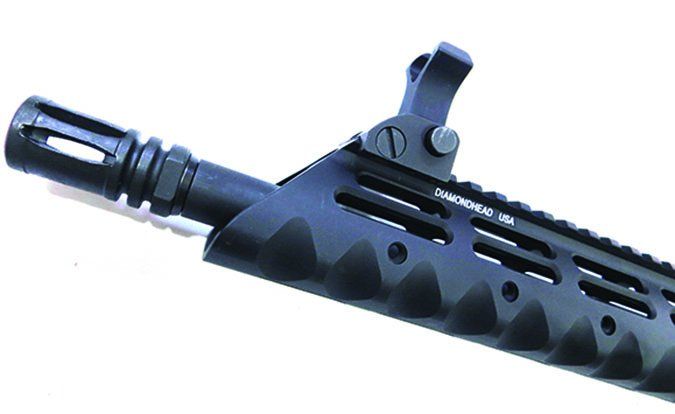
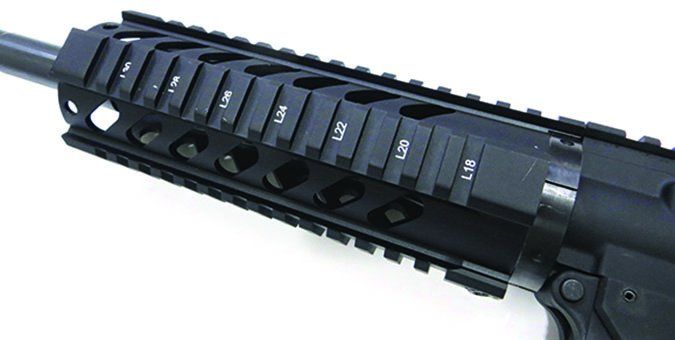
Magazine manipulation with the skinny stick magazine took some getting used to. The magazine well was beveled, which aided insertion. Also, the all-steel magazines seemed to insert easier due to the metal-against-metal slickness, compared to the plastic-against-metal characteristic of the Tresna. All mags dropped freely from both rifles. We allowed magazines from a bolt-lock reload to hit the cement floor of the range in hopes of inciting some magazine failures, but we had absolutely no issues, except scraped magazines. The 9T’s magazine was long and did not allow a shooter to easily fire from the prone position. The rifle needed to be fired with the ejection ports parallel to the ground. The Tresna had a slight edge over the Stag Arms in this respect, because a variety of magazines of different length could be used.
The single-stage trigger averaged a 5.9-pound pull weight and allowed testers to really rip through magazines slightly more accurately than the trigger on the Tresna. The 9T had a bit of creep before it broke, but the groups the Stag Arms provided were helped out due to the trigger, we believe. The best group was with Atlanta Arm 147-grain FMJs, five shots of which came in at 0.48 inches at 25 yards. When the team fired offhand for speed, the groups opened up to about 4 inches, on average, with all the ammo. We needed to practice some bolt-lock reload drills to get accustomed to working the stick magazines better.
Our Team Said: From the onset of live-fire testing, the team found this AR carbine offered everything an AR-15 did but with less recoil, less blast, and less noise. The Stag Arms 9T is good to go out of the box. Accuracy was slightly better than the Tresna, but not by much. Magazine manipulation caused us a bit of ramp up time, but it wasn’t a game changer.
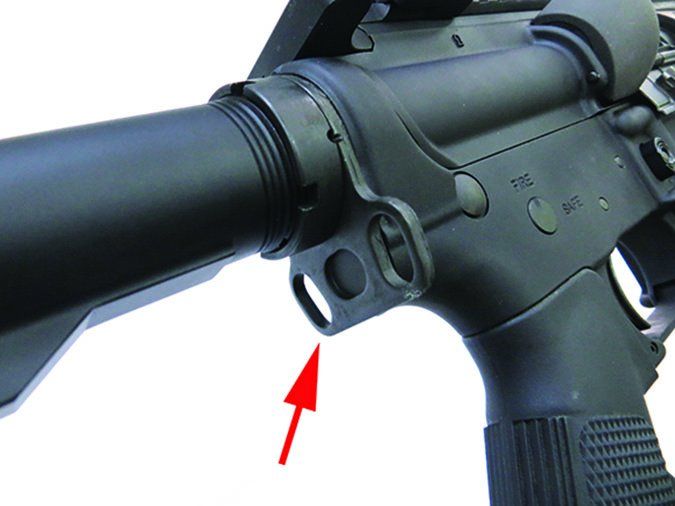
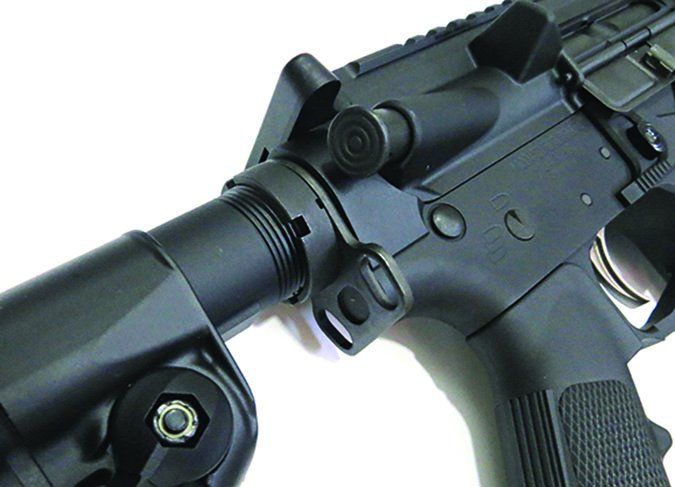
Tresna Defense JAG9G BU
9mm Luger, $1100
The JAG9G BU moved compatibility up a notch since it accepts any Glock Gen4 double-stack 9mm magazines. The Glock fans on the team liked this feature. The Tresna shipped with a factory Glock 33-round magazine. It had similar operating controls to a standard AR-15 and is 99 percent compatible with AR-15 aftermarket parts, the company says.
The forged upper receiver featured a 16-inch barrel with a 1:10 right-hand twist and government-style profile. Screwed onto the muzzle was an A2 flash hider. The barrel was free floated in an aluminum quad rail that offered a very rough grip and plenty of areas to mount accessories.
It needed rubber rail guards to take care of the sharp edges. Oblong slots in the handguard helped cool the rifle. The top rail extended from the rear of the upper through the entire length of the handguard, offering a variety of optic-mounting positions. It comes without sights, so the Tresna needs to have an optic or BUIS mounted in order to be ready to shoot. The cost of a set of sights ranges from $80 to $300 depending on type and brand, which is pretty close to the difference in the cost of the two carbines.
The charging handle manipulated the large bolt in the blowback operating system. A full-size dust cover and standard-size brass deflector are used.
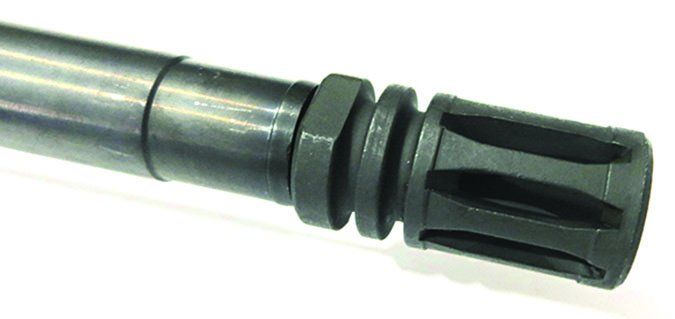
The lower receiver was precision machined from billet aluminum, whereas the Stag had a standard forged lower. On the Stag, you can replace the trigger guard, but on the Tresna, it is machined in. The Tresna guard is oversized, so shooters may use gloves and not encounter space problems inside the trigger guard. The magazine well was flared, and inserting a magazine was fast, even with small G26 magazines. The front edge of the lower’s magazine well also had coarse serrations and a flare on the lower edge, allowing a shooter to use this gripping area to pull into the rifle into his or her shooting shoulder.
The magazine well was angled to accommodate the Glock magazines. Inserting a magazine seemed quicker due to the angle of the magazine well and position of loading hand. On the 9T, the magazine needs to be inserted perpendicular into the receiver, so a little more reloading skill and practice was required to do it quickly.
Material was machined away forward from the trigger on both sides, so either a right- or left-handed shooter can comfortably position a trigger finger at the ready. The adjustable Rogers stock was a nice piece of plastic, according to most members of the team. It featured a lock-down lever that takes any wiggle out of the adjustable stock. The A2-style pistol grip worked well. The single-stage trigger had a bit of creep, but consistently broke at 7.5 pounds. On the last round fired, the bolt locked rearward.
Like the Stag Arms rifle, the Tresna had a preference for the heavier 147-grain bullets. Atlanta Arms gave up 1.0-inch five-round groups at 25 yards. Shooting offhand for speed, team members could fire fast and easily place rounds in center of mass. The rifle performed without any issues and with any Glock Gen4 9mm magazine we ran through it.
Our Team Said: The JAG9G BU performed well. Accuracy was good, as was reliability. Compatibility with Glock magazines is a plus if you already own a Glock handgun. It needed sights or an optic out of the box. The stock was top notch, but handguard would probably be replaced.
Written and photographed by Robert Sadowski, using evaluations from Gun Tests team testers.




























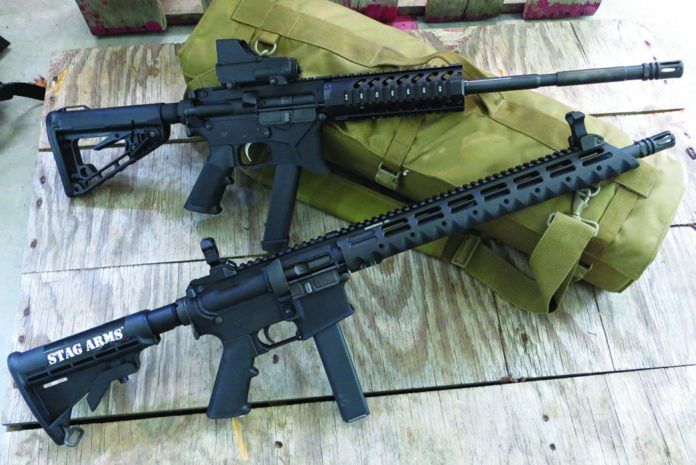
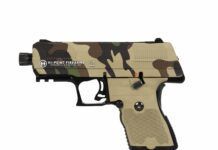
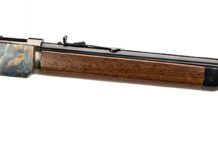
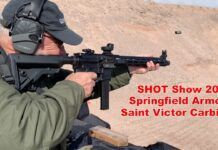

Do you know what retailers sell the Tresna? I’m having a difficult time finding one. Thanks.